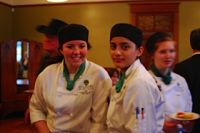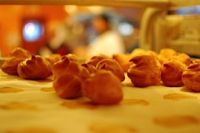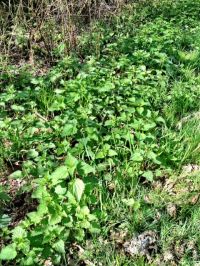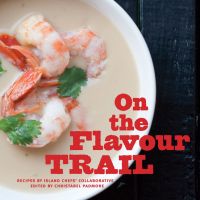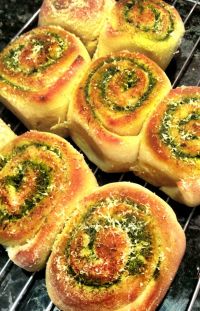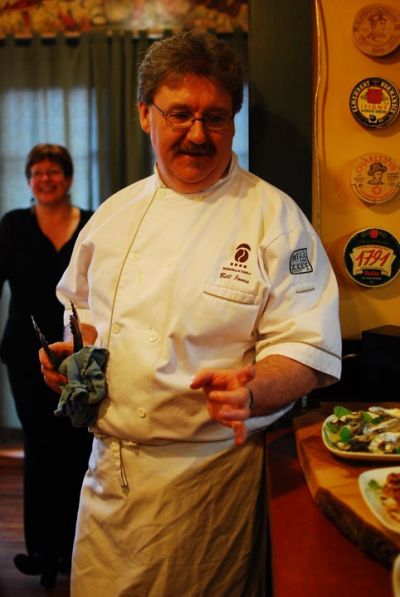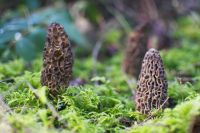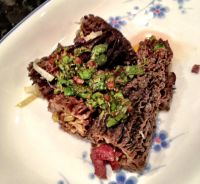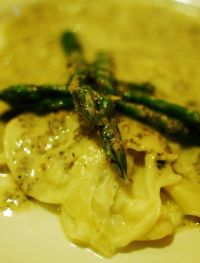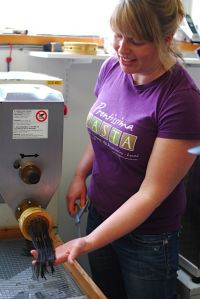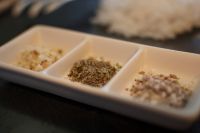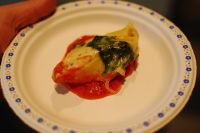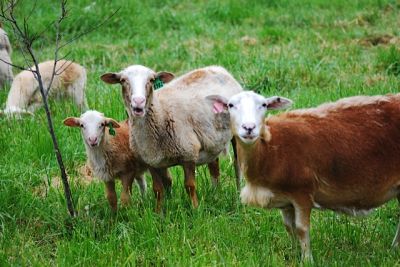 Local Food Champs
Local Food Champs
As with all cultures, part of who we are is determined by the food we eat and how we eat it. Our food culture is changing on Vancouver Island as more people choose a local, sustainable food lifestyle. But who are the people who are helping to change the way we eat? I met a whole bunch of them on Monday night and talked about them on this week’s edition of Food Matters on CBC Radio’s All Points West.
I met them at the Belfry Theatre in Victoria as part of an event called Food Talks, Changing the Way We Eat. This was an evening put on by CR-Fair, a coalition of organizations working to strengthen food security in this region along with helping to develop a more local food system. For the past number of year CR-Fair has been taking nominations and choosing a Local Food Champion. This year six of the eight nominees were able to attend this event and speak in a TED-Talks style forum about what it is they do and why they do it.
Their activities are quite wide-ranging. It really goes from a one on one food level, such the cooking program run for just 6 people at a time at the Cool Aid Community Kitchen, or the Food Swap Program which was started with the help of Derek Powell of Barefoot Organics, where you take the fruits of your labour, be it preserves or baking, and swap them with what other people have to offer. On a larger community scale, we heard from people in programs that reach a wider swath of the public, like the Victoria Downtown Public Market Society and its soon-to-be-realized efforts to create a permanent public market in the Hudson Building, or the Camosun FarmBox Program, which helps students join a type of Community Supported Agriculture Program that they can access right on campus. And then there is the Lifecycles Growing Schools Program, which is helping schools in the region create organic food gardens on their properties.
I don’t want to play favourites, but some of these people have such wonderful stories I think you will hear about some of them more in depth in the weeks to come on this column. But Kim Cummins of the Camosun FarmBox program gave a great explanation about the range of benefits provided to both farmers and students. Students benefit by not having to even travel off campus to get affordable, local food, and when they pick up their boxes there are volunteers there to tell them what the food is and how to prepare or cook it…something a lot of students need at that time in their lives if they haven’t learned at home. For the farmers, they get to stay at home doing farmwork, instead of having to go and deliver or sort their products. Again, volunteers go out to the farm to pick up the goods, and those volunteers again are involved in a learning process with the farmer.
So Kim was a runner-up Food Champ, and another runner-up food champ that couldn’t be there were the folks who put together the Salt Spring Abattoir project. When meat inspection regulations changed in 2007 it meant an end to farmgate slaughtering and sales, all animals had to be trucked off of the Island to be processed, then shipped back. That added expense saw Salt Spring lose about 50 percent of its meat production. The abattoir project means small scale meat producers will have a place to have their animals processed, and that in turn means more locally available food for Salt Spring residents.
A project that is unique enough in this area that it has been garnering some notice from the public, who sent in the nominations for Food Champs this year. It’s called Meadowbrook Farmily. Elizabeth Upton represented the four families who came together to not only buy a farm but have most of them live on it together as well, including 8 small children. These are all families who wanted to farm, but in no way could they afford to buy a farm property on their own. So, they share ownership and the chores, and have found themselves in the middle of a mixed use farm that grows blueberries as the main products, but also pork, beef and chicken…and they also board horses. They’ve only been at it for less than two years, and the best news so far is that the kids have yet to get sick of eating blueberries every day.
The other project that I am just beginning to hear about is called the Food Hub, driven in part by Dwane MacIsaac, president of the Island Chefs Collaborative, who is in the middle of developing some much needed infrastructure for this region that will include things like a commercial kitchen that can be leased 24 hours a day, 7 days a week, a huge walk-in cooler that will allow farmers to grow more produce because they will have somewhere to store it, a teaching café, where people can take cooking classes but also where students can be trained in how to work in professional kitchens, and there are even plan for a grain mill to only be used to mill gluten-free grains. You are definitely going to hear more about the Food Hub in a future program.
And the winner is Miranda Lane of the Cool Aid Society and the Community Kitchens Network for her work in that network to educate people about food, get them some skills as well as any much-needed connections in the community for people facing barriers in their everyday lives. In her speech to the crowd at the event she talked about how community kitchens are a great recipe for bringing people together to cook and share food in a convivial atmosphere, and that there has been so much emphasis on de-skilling society we have lost a lot of our ability when it comes to cooking and that community kitchens are one way of trying to reverse that trend. Miranda will give half of her $500 cash award to the community kitchen network, and the other half to her Cool Aid community kitchen where it will allow her to run one complete session and feed the people doing it.


